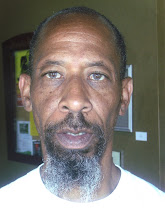The late Dr. Asa Hilliard stated in his work entitled Sba the Reawakening of the African Mind, that we have to do a deeper analysis of our social, economic and political situation. He said that, “We Africans, however, have not viewed our problem holistically. After years of living under conditions of extreme oppresion, we have settled for limited definitions of our problem. A classic example may be taken from the period of the civil rights movement. The evil and gross injustice of slavery and segregation violated the civil rights of African people and had to be addressed. However, the necessary task of fighting for civil rights was insufficient to allow for the healing of our people. Our healing reguires a greater conceptual frame than that provided by civil rights. To understand homelessness and other social maladies that plague our community we must examine other aspect of the conditions that they were introducing to. One must examine the social, political, economic (material) and historical circumstance in which they are located. You must look at the institutions, education, religion, etc. Contemporary homelessness and poverty did not occur in a vacuum. Rather, there are measurable social, political, economic and historical precedents that can give insight into the development of the United States as a super power and at the same time seizing economic and political power of other peoples and lands. There are mitigating circumstances that promote and perpetuate these inhumane conditions that not only African Americans are dominated and controlled under, but must human beings on the planet earth are either directly affected by the globalization, imperialism and manifest destiny that have motivated the Europeans since coming out of their sleep during the Middle ages.
The homeless, at one time in contemporary history, were labeled as “invisible” people. It was easier to ignore there presence. Their political power is all but absent save a few organizations that have been established to help protect their minimal rights. Always under scrutiny, we avoid eye contact with them even as we reach into our purses or pockets to give them change. Some look upon them with either sympathy or empathy, too often we see them with shame. Then others just look at them in disgust. Still others know that they could very well be in the very same predicament or are only a paycheck away from poverty. The advocacy community often argues that all of us are "only one paycheck" away from homelessness and that "these days" increasing numbers of formerly middle-class people are found among the ranks. In fact, exceedingly few homeless people come from middle-class backgrounds although given the current world economic condition with the government bail outs.. As the data suggest, people typically stay witin the socio-economic class from which they were born. Most homeless people were born into poverty and have been poor all their lives; they are not only the poorest of the poor but also the most persistently poor. Like poverty in general and extreme chronic poverty in particular, homelessness impacts with particular severity on the young, racial minorities, and socially unaffiliated. The average age of homeless persons in any number of credible studies is reported to be in the low to middle thirties; racial and ethnic minorities are heavily overrepresented. Most of the homeless were chronically unemployed for several years before their first spell of homelessness, this despite the fact that half of them have graduated from high school.
Williams, David A. (2009) unpublished manuscript

No comments:
Post a Comment